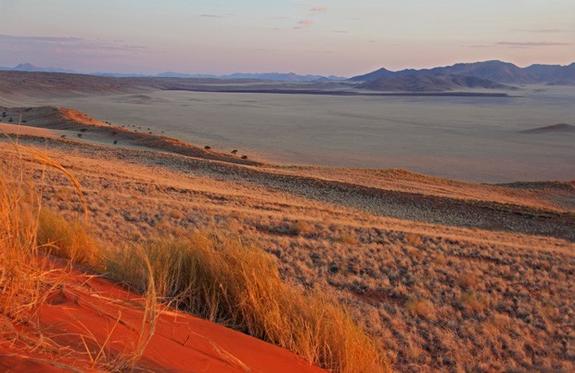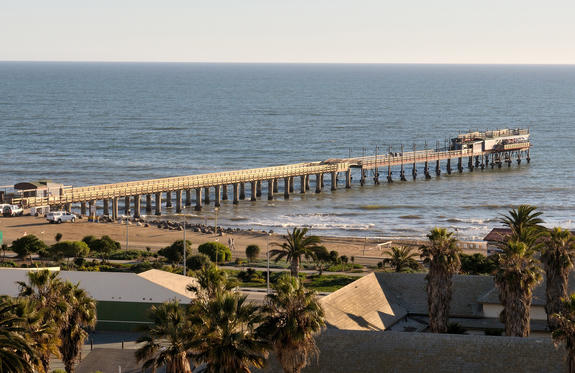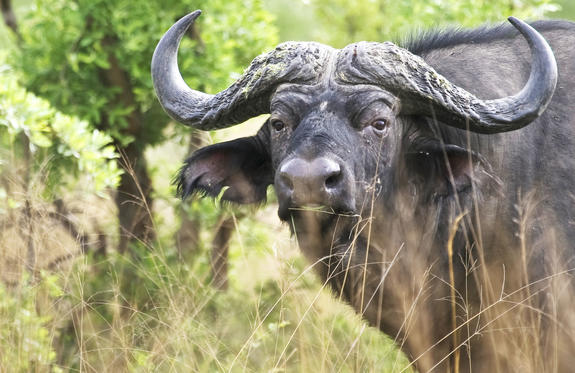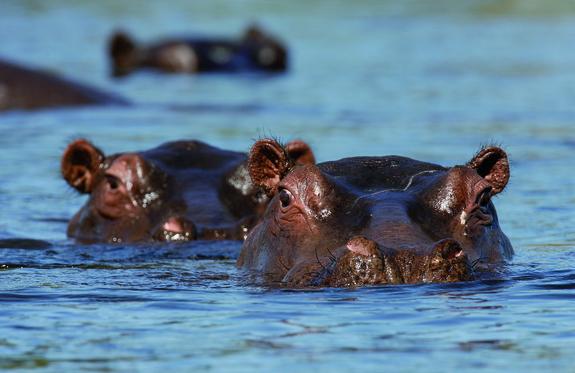Namibia, a timeless Adventure
“A land of contrast & dramatic beauty - exuding a timeless appeal. From awe-inspiring landscapes combined with untamed wildlife, it’s a boutique bucket list destination.”
In south western Africa lies a land of compelling fascination. A land for those who worship at the shrine of Africa at its most resplendent, but also at its most unconventional. This is Namibia.
Described by the bushman as the “Soul of the World”, Namibia is rugged, natural, soulful and liberating. While the forces of nature have been fierce and unforgiving, they have also been bountiful. In this cauldron of heat and relentless force, God has created landscapes that are paralleled in their beauty only by the most exquisite diamonds found here. Imagine huge canvasses, uninhibited by man’s limitations, splashing swathes of colour of the monumental, star shaped dunes of the Namib Desert and the surreal Salvador Dali’esque Deadvlei, with its white clay pans, red dunes and blue skies. The awe-inspiring mountain ranges of some of the last true wilderness areas in Damaraland and the forlorn, windswept skeleton coastline. As all Africa, Namibia has abundant wildlife in our National Parks as well as the large tracts of land which lie unfenced and unfettered for wildlife to traverse. Much of this land has been made available to the local communities, and both these, as well as private land of many farmers who have banded together, have been declared as local conservancies. Namibia also has the richest succulent flora in the world, harbouring about one-third of the world’s approximately 10,000 succulent species. Namibia is a melting pot of sights, sounds, aromas, tastes and emotions in abundance, just waiting to be experienced.
Namibia is home to the infamous Skeleton Coast, that forlorn and rugged coastline along the Atlantic Ocean. It is here where we find the Namib Desert, the World’s oldest desert and a World Heritage site, from which the country gets its name. The eastern expanses are dominated by the Kalahari Desert; the central highlands are renowned for its free-roaming wildlife and the Etosha National Park. Kaokoland and Damaraland are where we find some of the most dramatic landscapes, the uniquely adapted desert animals and the proud Ovahimba people. And to top it off – the contrast of the lush forest vegetation of the Zambezi region, part of the KAZA Transfrontier National Park. Like the diamonds mined here, Namibia is a true gemstone waiting to be discovered.
MAJOR ATTRACTIONS
Namibia’s appeal lies in its dramatic mix of spectacular landscapes, iconic cultures and African wildlife. The Namib Desert is home to the world’s highest dunes and oldest desert plant known to man. The Fish River Canyon is surpassed in size only by the Grand Canyon, while the 60 ton Hoba Meteorite is globally the largest of its kind. Namibia’s wildlife is exemplary and home to the Big 5, albeit, unlike a zoo, not found in one area. A great portion of Namibia falls under communal land, where the tourist can interact with age-old cultures such as the Himba, Damara and the Bushmen. Swakopmund, wedged between the Atlantic Ocean and the desert dunes and fondly known as Namibia’s playground, is a must for adventure and leisure tourists.
SEASONAL HIGHLIGHTS
Namibia is an all-year destination with over 300 days of sunshine. The dry winter months are generally better for game viewing and with clear cold skies, one of the world’s most sought after stargazing destinations. In wetter months, our green season, calving season commences and birding as well as botanical safaris are spectacular. The wide range of national parks ensure an unforgettable wildlife experience throughout the year.
ADVENTURE
Join expert rangers in Damaraland tracking desert elephant or black rhino, or experience the allure of the Namib Desert from a hot-air balloon. Hike the second largest canyon on earth, or learn first-hand survival practices from real Bushman while following them into the Kalahari. Watch dolphins and other aquatic animals on a catamaran cruise on the Atlantic Ocean or enjoy a roller coaster quad bike experience in the Namib Desert dunes.Enjoy your own self-drive adventure in national parks and untouched wilderness areas, meeting the cultures and relishing the freedom of endless space.
SHOPPING
All larger cities and towns offer high quality shopping and culinary experiences equal to European standards. While Windhoek’s high-end shopping malls are ideally suited to cater to all shopping needs, the centre of the city still offers streets where some smaller boutique style or owner managed outlets exist. Swakopmund has not yet acceded to the commercialism of malls and the town is still built around a small centre of busy shops. These more laid-back small arcades and cafeterias, all reachable on foot, promote a relaxed holiday atmosphere. Throughout Namibia guests can stop at informal markets en-route to their next destination to shop for wooden souvenirs, minerals, clothing or even traditional food.
DID YOU KNOW?
- Namibia has the highest concentration of Cheetahs on earth
- Namibia is the second least populated country
- 46% of Namibia’s surface area is under conservation management
- The entire coastline of Namibia is protected by national parks
- Etosha national park boasts 114 different animal species

The NamibRand Nature Reserve, located in southern Namibia, is a private nature reserve established to help protect and conserve the unique ecology and wildlife of the south-west Namib Desert. Conserving the pro-Namib, the area along the eastern edge of the Namib Desert, is critically important in order to facilitate seasonal migratory wildlife routes and to protect biodiversity. It is probably the largest private nature reserve in Southern Africa, extending over an area of 202,200 ha. The Reserve shares a 100km border with the Namib-Naukluft National Park in the west and is bordered in the east by the imposing Nubib Mountains. Virtually all facets of the Namib Desert are found on the Reserve - sand and gravel plains, stretches of savannah alternate with mountain ranges and vegetated dune belts.

The Namib is the world’s oldest desert, and although it stretches along the entire length of Namibia’s coastline, the Namib commonly refers to the vast sea of sand from Luderitz to Swakopmund. For a big sandy desert the scenery is remarkably varied, with the giant red dunes of Sossusvlei being the most famous part. Because of how old it is the Namib is home to numerous species that don’t occur elsewhere and although no humans live in the desert an amazing array of flora and fauna manages to survive here. Famous species include the Welwitschia – a living fossil plant, endemic chameleons, fur seals along the coast, brown hyenas, jackals and remarkably one of Africa’s largest antelope the Gemsbok. The name Namib is of Nama origin and means "vast place" and vast it certainly is.

With palm-lined streets, seaside promenades and fine accommodation for all budgets, Swakopmund is Namibia’s most popular holiday destination, and its pleasant summer climate and decent beaches attract surfers, anglers and beach lovers from all over Southern Africa. Thanks to its mild temperatures and negligible rainfall, Swakopmund generally enjoys grit in the oyster. When an easterly wind blows, the town gets a good sand-blasting, and almost perpetual drizzle. The fog rolls up to 30km inland and provides moisture for desert-dwelling plants and animals, including 80 species of lichen. For better or worse, Swakopmund feels overwhelmingly Teutonic – indeed, it has Germany – but for visitors, it’s a Namibia’s adrenalin capital, and offers a wide range of gut-curdling activities from sand boarding and quad-biking to skydiving and camel riding. Note, however, that it gets especially busy around Namibian school holidays in December and January, when temperatures average around 25ºC.

Situated in the wild north western Kunene region in Namibia, the Purros area, also known as ‘Puros’, features arid semi-desert terrain characterised by a blend of undulating hills, wooded river valleys and vast plains covered in sparse savannah, dotted with acacia and tamarisk trees. This remote area is a 4X4 enthusiast's dream, lying deep in the heart of the Kaokoland wilderness. It is home to an array of unique desert adapted wildlife such as elephant, lion, black rhino and giraffe. Visitors can stay overnight at several lodges and camps and enjoy numerous activities including: game drives, Himba cultural tours or guided tours of a local village.

Situated on the eastern side of Etosha, bordering Fisher's Pan, Onguma Game Reserve is one of Namibia's best kept secrets! Here you will be afforded the opportunity of experiencing Africa in all her beauty and diversity. Onguma Game Reserve has more than 34,000 hectares of protected land and wildlife. Our nature reserve boasts over thirty different animal species consisting of plains game including kudu, giraffe, eland, oryx, hartebeest, zebra, impala and many more roam freely as well as predators such as lion, cheetah, leopard, being common residents of the area. The latest addition to the already abundant wildlife at Onguma Game Reserve is a family of black rhinos! More than 300 bird species can also be viewed at Onguma Game Reserve. During the Namibian summer months the nature reserve becomes a bird-watcher's paradise with thousands of species migrating to the wetlands created by the seasonal rains and ephemeral river systems.

Mahango Game Park is a small park, a short drive south of Popa Falls, on the border with Botswana. As Popa Falls is a natural point to break the long journey between Rundu and Katima Mulilo, Mahango Game Park should be considered for inclusion in the itinerary. Driving the route through the park will take approximately half a day. In order to drive the full circular route, an offroad vehicle will be needed. There is a shorter route which can be driven by a sedan in the dry season. The effort of visiting the park will be rewarding in terms of wildlife and bird watching. The Mahango Game Park has a high number of elephants, as well as fair numbers of antelopes which are scarce or not seen in other parts of Namibia. These include the roan and sable antelope, tsessebe and the red lechwe. The park is also home to a number of sitatunga, however these antelopes are very scarce, and sightings will be excellent luck. The best time to see elephants and antelope will be during the dry season. Part of the park borders on the Kavango river, so the possibility of seeing crocodiles exists. In order to see hippos, the traveller should book a nocturnal game viewing trip, as hippos are nocturnal creatures. The best time for game viewing is in the dry months between March and October. The Mahango Game Park is an excellent destination for bird watching. It has three different habitats: the Kavango River, the flood plains, known as omurambas and woodlands, so a wide spread of species can be seen. The best time of year for bird watching is in the rainy months from November to February.
Botswana is well known for having some of the best wilderness and wildlife areas on the African continent. With a full 38 percent of its total land area devoted to national parks, reserves and wildlife management areas – for the most part unfenced, allowing animals to roam wild and free – travel through many parts of the country has the feeling of moving through an immense Nature wonderland. Botswana is a rarity in our overpopulated, over-developed world. Untamed and untameable, it is one of the last great refuges for Nature’s magnificent pageantry of life. Experience here the stunning beauty of the world’s largest intact inland Delta – the Okavango; the unimaginable vastness of the world’s second largest game reserve – the Central Kalahari Game Reserve; the isolation and other-worldliness of the Makgadikgadi – uninhabited pans the size of Portugal; and the astoundingly prolific wildlife of the Chobe National Park. Botswana is the last stronghold for a number of endangered bird and mammal species, including Wild Dog, Cheetah, Brown Hyena, Cape Vulture, Wattled Crane, Kori Bustard, and Pel’s Fishing Owl. This makes your safari experience even more memorable, and at times you will feel simply surrounded by wild animals. The first – and most lasting impressions – will be of vast expanses of uninhabited wilderness stretching from horizon to horizon, the sensation of limitless space, astoundingly rich wildlife and bird viewing, night skies littered with stars and heavenly bodies of an unimaginable brilliance, and stunning sunsets of unearthly beauty. As well, with more and more cultural tourism options on offer, you will be charmed by the people of Botswana, visiting their villages and experiencing first-hand their rich cultural heritage. But perhaps most of all, Botswana’s greatest gift is its ability to put us in touch with our natural selves. It offers that vital link so keenly felt by inhabitants of the developed world, a pervasive void we feel but often cannot name – our connectedness with Nature and the astonishing diversity of plants and animals to be explored.

The Chobe River forms the northern boundary of the Chobe National Park, renowned for its reliable and diverse game viewing. Safaris are conducted both by boat and on land. This section of the park is best known for its elephant and hippo populations but the waters attract all manner of game including large herds of buffalo and the lions that prey on them.
A nation of spectacular natural beauty, friendly people and rich culture, Zimbabwe’s status as one of Africa’s leading safari destinations was dampened for years by its political instability. But now that the country is transcending its strife and returning to a state of equilibrium, it is once again emerging as a vacation highlight of the continent. Victoria Falls – known to locals as ‘The Smoke That Thunders’ – is one of the seven natural wonders of the world and the sheer power of this massive body of water plunging into the Zambezi Gorge is awe-inspiring and unforgettable. Lake Kariba, with its game-rich shores and islands, is an idyllic safari spot featuring mind-blowing sunsets; Hwange National Park is known for its huge herds of elephants; and a kayak trip down the Zambezi through the Mana Pools National Park will appeal to the intrepid traveller, providing close encounters with crocodiles, hippos and a host of other wildlife.

One of the original natural wonders of the world, the Victoria Falls is a World Heritage Site and an extremely popular tourism attraction. Known locally as ‘The Smoke that Thunders’ this spectacle is accessible from both Zambia and Zimbabwe and it is an ideal place to combine a game viewing and water sports. There is excellent fishing, a terrifying bungee jump and arguably the best commercial white water rafting in the world.
Elephant Interaction
Spa TreatmentsWalking Safaris - Nature & Birding Walks
Wild Horizons Tour of the Falls




